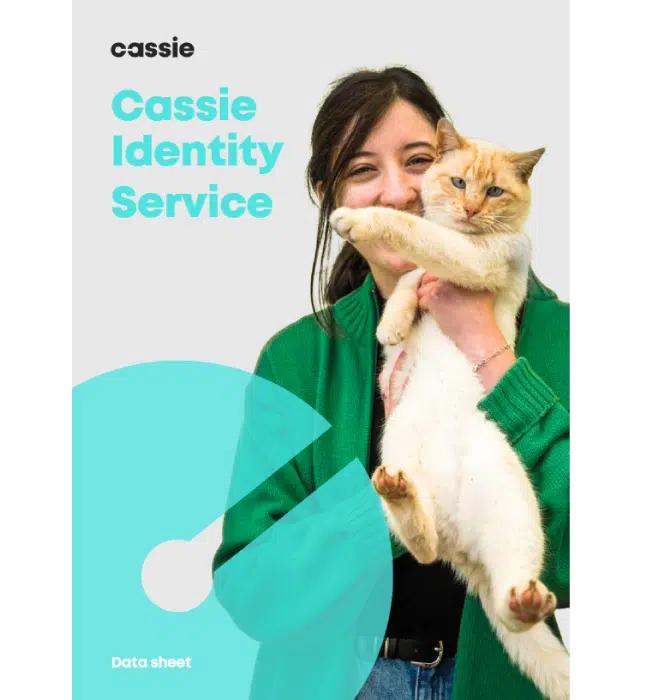How AdTech is getting ready for the cookieless future
Posted: April 5, 2023
Cookies, ever since their invention in the mid-1990s, have remained the lifeline of the AdTech industry, helping marketers and ad agencies derive behavioral and demographic insights from third-party data to create target audiences and segments.
As advancements to remedy the data protection of users were made on both the tech and legal fronts, a major player in the AdTech domain, Google, was forced to reinvent the wheel and put an end to privacy-invasive third-party cookies (TPCs) forever. Google has announced plans to make the use of TPCs obsolete by the end of 2024.
As new alternatives are still being tested and debated, there looms a risk of a US $10 billion loss in annual sell-side revenue, according to February’s State of the Data report from the Interactive Advertising Bureau (IAB). Amid this massive crackdown on TPCs, marketers could see a massive shrinkage in the data gathered through TPCs.
In the absence of TPCs, marketers will have to track a viable strategy to target their target customers and develop alternative ways to collect audience data. Let’s dig up possible alternatives for third-party cookies.
Why third-party cookies are crumbling
While first-party cookies are domain-specific and help websites gain insights into user interactions, third-party cookies are set by websites other than the one the user is visiting and are used for tracking users across websites and serving ads relevant to users’ needs and interests. TPCs are increasingly discouraged because of users’ lack of visibility into the various domains where their data is shared.
On the tech front, Safari and Firefox have long blocked third-party cookies by default. On the legal front, the arrival of data privacy laws like GDPR and CCPA, in terms of consent management, has made it mandatory to obtain explicit and informed consent from users before placing TPCs on their devices. Amid all these events taking place, Google caved and announced it would phase out cookies by 2022, but later postponed it to the end of 2024.
Google’s alternative for third-party cookies
Alphabet Inc., the parent company of Google, makes 80% of its total revenue from selling digital advertising alone. Google’s stack in the advertising market would be in jeopardy when TPCs are gone. Google can’t risk its tracking, attribution, and personalization capabilities.
Google has proposed Privacy Sandbox, which aims to address privacy risks with TPCs. Privacy Sandbox is a set of proposals and technologies that reduce cross-site and cross-app tracking while still enabling online advertising and keeping the internet free to users as it is.
At its heart, Privacy Sandbox encompasses the following key values:
- Elimination of TPCs and cross-site and cross-app tracking mechanisms
- Prohibiting servers from tracking user IP addresses and using them as identifiers
- Preventing digital fingerprinting by removing any data consistency across web domains from the browser
- Implementing client-side clustering of users in a way that protects their privacy while still allowing room for targeted advertising, measurement, retargeting, etc
- API-driven ad measurement and reporting on aggregated data without revealing individual event-level details
Currently, Privacy Sandbox is in its infancy, and its proposed Federated Learning of Cohorts (FLoC) model was discontinued because it failed to provide the promised privacy as a grievance redressal mechanism. A number of other approaches have also been unsuccessful. As of the first quarter of 2023, for the web version, Google has Topics API and Protected Audience API in the pre-launch testing stage as alternatives to show relevant content and ads. To strengthen cross-site privacy boundaries, the Shared Storage API and Fenced Frames API are proposed methods.
How to adapt to the cookieless future
Having been the silver bullet for marketers for over two decades, it can be difficult to say goodbye to TPCs so quickly. But understanding that current days are crucial for A/B testing and finding a suitable medium before D-day arrives can help marketers sustain futuristic privacy-preserving monetization requirements. The need of the hour is discovering means and alternatives that exhibit relevance and usefulness to customers without infringing upon their privacy.
1. Create your first-party data resource
First-party data is data collected by businesses directly from their clients through interactions and engagements across various touchpoints, such as websites, applications, social media, or other opt-in mechanisms. It is a reliable and trustworthy form of data that users voluntarily share with businesses. This data, which is willingly shared by users, reflects the direct relationship between businesses and their customers.
Businesses can analyze data collected from various touchpoints to identify patterns, behaviors, and preference management to segment customers into groups and link identifiers like email addresses, device IDs, or cookies to create a comprehensive and holistic understanding of individual customers. This segmented and unified view can be leveraged for creating personalized marketing campaigns, product recommendations, and tailoring strategies to meet customers’ needs effectively.
Strategies to develop first-party assets:
- Implement mechanisms for data capture – Websites or apps should optimize sign-up forms, newsletter subscriptions, chatbots or customer interactions, survey forms, and feedback forms to collect more first-party data. This can involve incentivizing customers with exclusive content, discounts, promotions, or providing value in exchange for data, such as an enhanced experience.
- Integrate first-party data with aggregate data – With a clearly intended goal in sight, specific types of first-party data and data aggregated from partners, third-party providers, publicly available domains, and industry data could be combined and analyzed using data analysis techniques including statistical analysis, data visualization, and machine learning to gain actionable insights.
- Prioritize data privacy and security – Users are likelier to share data with companies with a credible history and secure relationships. Businesses should ensure their data collection practices comply with applicable privacy laws and regulations and clearly communicate to users their privacy policy, data usage, and security measures.
2. Contextual marketing
Contextual marketing is projected to reach $335 billion by 2026. As an alternative to TPCs, contextual marketing is a proven way of generating revenue. The Washington Post and the New York Times have been relying on this technology for ages.
With contextual marketing, websites can deliver more relevant and timely messages or offers to increase the chances of customer engagement and conversion. Contextual marketing derives insights from customers’ current situation and environment to serve messages or offers that are more likely to resonate with the individual.
Contextual marketing aims to deliver personalized and relevant content and advertisements to customers based on their context, which can include factors such as location, preferences, demographics, or behavior. For example, let’s say a customer purchases hiking gear from an e-commerce website that, through first-party data or website analytics, knows the customer’s past purchases, browsing behavior, location, etc.
This website might also know of national parks in the area where the customer resides and that the customer has exhibited an interest in backpacking trips. Using this contextual information, the e-commerce website can show offers containing camping gear or hiking boots to the customer directly on the website or reach out via email for a more personalized experience.
Takeaways
Third-party cookies provided a better way to understand and market to customers, not to mention a highly personalized and targeted customer experience. However, the underlying processes also made customers feel uneasy about the data privacy issues. Brands should visualize the phasing out of TPCs as a change in marketing pattern for the better, rather than something taken away. The days ahead for marketing rely primarily on first-party data, and those who comprehend the significance of loyalty programs and foster healthy relationships with customers will lead the way by miles.
Identify and understand your visitors with Cassie’s cookie solution
If you have multiple websites and digital platforms, then Cassie is the cookie management system for you. Cassie specializes in cross-domain and cross-device consent so you can collect visitors’ consent across multiple subdomains. Choose Cassie for the most flexible cookie solution on the market and get a deeper insight into your visitors.
Flexible for global operations
Cassie’s multi-lingual and jurisdictional cookie module will ensure you are always in line with the various regulations.
Why clients choose Cassie for their compliance needs
We are experts at helping global businesses achieve compliance whilst building long-term relationships with their customers.
We make sure we always stay up to date with any and all legislation changes. Our unparalleled knowledge of global legislation gives us the ability and confidence to anticipate if and how new legislation will impact you.
Cassie makes sure that when you are compliant, you stay compliant.

Preparing for a cookieless future
Cassie’s Identity Service delivers the consent that your visitors originally made. Our solution is fully compliant and resolves the inaccurate data attribution data caused by browser technologies.
Cassie’s Identity Service is easy to deploy and used by some of the world’s biggest brands. Learn more about our Cassie Identity Service from our data sheet available.

